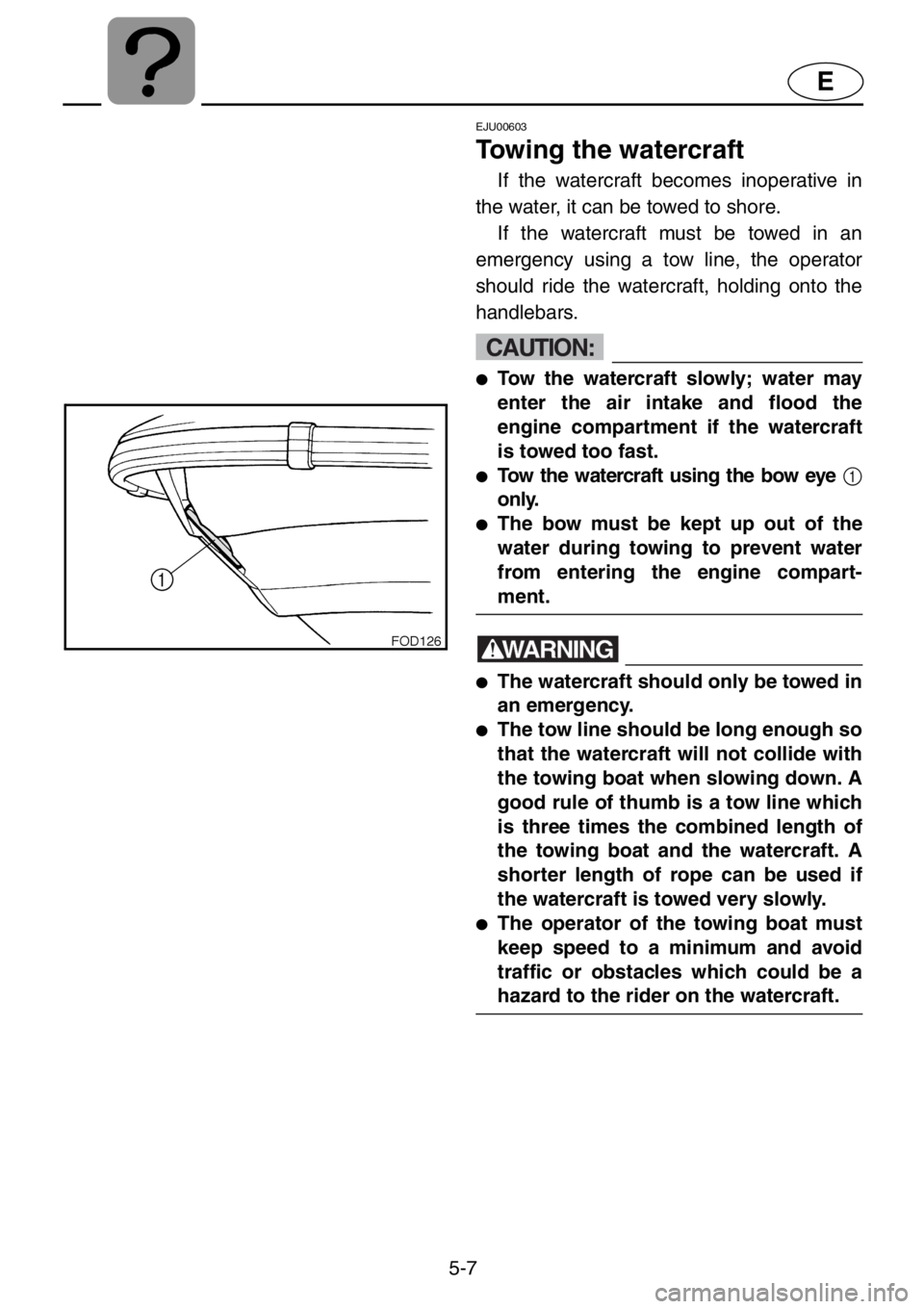Page 22 of 131

1-15
E
●When preparing to pull a skier, operate
the watercraft at the slowest possible
speed until the watercraft is well away
from the skier and slack in the towrope is
taken up. Make sure that the rope is not
looped around anything.
After checking that the skier is ready and
that there is no traffic or other obstacles,
apply enough throttle to raise the skier.
●Make smooth, wide turns. The watercraft
is capable of very sharp turns, which
could exceed the abilities of the skier.
Keep the skier at least 50 m (150 ft),
about twice the distance of a standard
towrope, from any potential hazard.
●Be alert to the hazard of the towrope han-
dle snapping back at the watercraft when
the skier falls or is unable to get up on the
skis.
●Towing heavy or bulky objects other than
skiers, such as another boat or watercraft,
can cause loss of steering control and
create a hazardous condition. If you must
tow another boat in an emergency situa-
tion, operate slowly and cautiously.
EJU00319
Safe boating rules
Your Yamaha watercraft is legally consid-
ered a powerboat. Operation of the water-
craft must be in accordance with the rules
and regulations governing the waterway on
which it is used.
Page 26 of 131
2-1
E
EJU00327
Location of main components
1Handlebars
Use to control direction.
2Footwell
Use to place feet for balance.
3Footrest
Use to place feet for proper balance when
seated facing rearward and acting as a spotter
for a water-skier.
4Bow eye
Use to attach rope for transporting, mooring or
towing the watercraft in an emergency.
5Hood
6Front seat
7Rear seat
8Sponsons
9Gunwale
Page 117 of 131
E
5
EJU00594
TROUBLESHOOTING
AND EMERGENCY
PROCEDURES
Troubleshooting....................................... 5-1
Troubleshooting chart ............................. 5-1
Emergency procedures........................... 5-4
Cleaning the jet intake and impeller ....... 5-4
Jumping the battery ................................ 5-5
Towing the watercraft ............................. 5-7
Submerged watercraft ............................ 5-8
Page 124 of 131

5-7
E
EJU00603
Towing the watercraft
If the watercraft becomes inoperative in
the water, it can be towed to shore.
If the watercraft must be towed in an
emergency using a tow line, the operator
should ride the watercraft, holding onto the
handlebars.
CAUTION:
●Tow the watercraft slowly; water may
enter the air intake and flood the
engine compartment if the watercraft
is towed too fast.
●Tow the watercraft using the bow eye 1
only.
●The bow must be kept up out of the
water during towing to prevent water
from entering the engine compart-
ment.
WARNING
●The watercraft should only be towed in
an emergency.
●The tow line should be long enough so
that the watercraft will not collide with
the towing boat when slowing down. A
good rule of thumb is a tow line which
is three times the combined length of
the towing boat and the watercraft. A
shorter length of rope can be used if
the watercraft is towed very slowly.
●The operator of the towing boat must
keep speed to a minimum and avoid
traffic or obstacles which could be a
hazard to the rider on the watercraft.